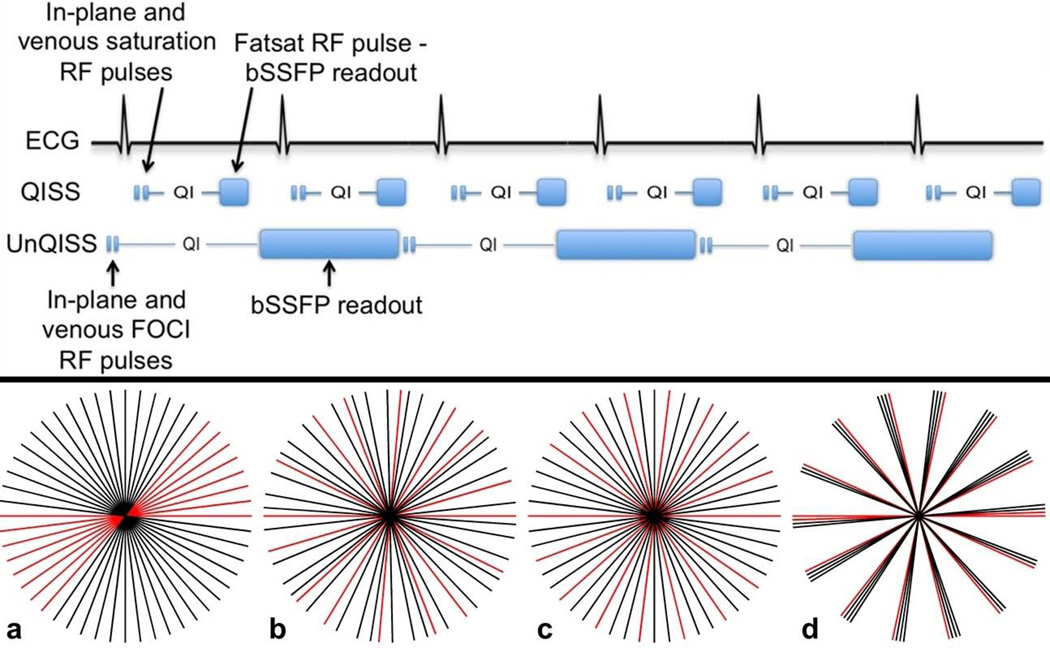Figure 1.
Top: Illustration of the differences between ECG-gated QISS MRA and UnQISS MRA. Compared with ECG-gated QISS MRA, UnQISS MRA is not synchronized to the cardiac cycle, uses FOCI inversion pulses instead of saturation pulses to suppress in-plane tissue and venous signals, uses much lengthier QI and bSSFP readout, and phase-based fat suppression instead of a chemical shift-selective fat saturation pulse.
Bottom: Azimuthal coverage for an UnQISS scan acquiring 26 views per shot with eight views (red) that are degraded by flow artifacts. (a) Linear azimuthal angle increment (6.92308 degrees), (b) golden angle increment (111.24612 degrees), (c) optimized azimuthal equidistant projections making multiple revolutions around radial k-space (increment of 20.76923 degrees, m = 3), and (d) non-optimized view angle increment (25.96154 degrees). The most uniform k-space coverage is provided by optimized azimuthal equidistant projections. The views containing artifactual signal fluctuations are well distributed using both the golden and optimized azimuthal angle increments, but are bunched together with the linear increment.

